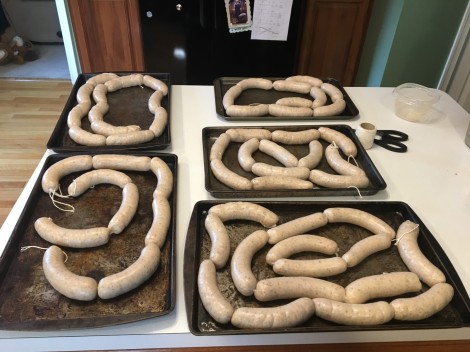I can't imagine Comets as dual-purpose. They max out around 5#, less for the hens, which makes them good for stock, not a lot else. Almost every other dual bird is bigger.
Otherwise, complete agreement with the other posters. Old Poultry is like dealing with a piece of beef heavy in connective tissues. Low, slow methods are needed to help things break down - like you would handle a brisket or a pot roast. Stewing works great. Pressure cooking. Curries and similar where the bird first brines/marinates in a coating that speeds the cutting of proteins into more manageable chunks, such as yogurt. For something completely different, grind, spice heavily, stuff in casings, and smoke as sausage, low and slow.
High heat dry methods (grilling, broiling, frying) aren't good choices with old bird, even after you have dealt with the differences in thickness which can make cooking a bird through the thigh w/o overcooking the breast such a problem for home cooks - even before accounting for the thicker breast on a commercial meat bird. If you do try one of those methods, part them out first, debone, and pound to similar thickness (thin!), then braise. or mechanically perforate like you would for Swiss steak or chicken fried steak, bread, and flash fry. Serve with gravy.
Otherwise, complete agreement with the other posters. Old Poultry is like dealing with a piece of beef heavy in connective tissues. Low, slow methods are needed to help things break down - like you would handle a brisket or a pot roast. Stewing works great. Pressure cooking. Curries and similar where the bird first brines/marinates in a coating that speeds the cutting of proteins into more manageable chunks, such as yogurt. For something completely different, grind, spice heavily, stuff in casings, and smoke as sausage, low and slow.
High heat dry methods (grilling, broiling, frying) aren't good choices with old bird, even after you have dealt with the differences in thickness which can make cooking a bird through the thigh w/o overcooking the breast such a problem for home cooks - even before accounting for the thicker breast on a commercial meat bird. If you do try one of those methods, part them out first, debone, and pound to similar thickness (thin!), then braise. or mechanically perforate like you would for Swiss steak or chicken fried steak, bread, and flash fry. Serve with gravy.



 The other is the southern version where the dumplings are rolled out. Here's how my family has done it for generations. This is not a side dish for us as for some, but a one dish meal. It is a must have when kids come home for a visit.
The other is the southern version where the dumplings are rolled out. Here's how my family has done it for generations. This is not a side dish for us as for some, but a one dish meal. It is a must have when kids come home for a visit.